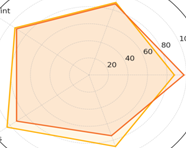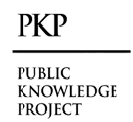Physical and Physiological Assessment of Vietnamese University Students
Keywords:
anthropometric measurements, cardiorespiratory function, muscular strength, motor performance tests, standardized benchmarksAbstract
Background: Comprehensive evaluation of both physical performance and underlying physiological parameters is essential to identify health and fitness status among young adults. This study aimed to characterize anthropometric, cardiorespiratory, autonomic, and motor performance profiles of undergraduates at the University of Health Sciences, Vietnam National University, Ho Chi Minh City, and to benchmark their results against national standards.
Methods: Ninety-two healthy students (33 males, 59 females; 18–22 years) underwent measurements of height, body mass, and body mass index. Vital capacity was assessed via spirometry, and autonomic recovery was indexed by heart-rate decrease during the first minute post-exercise. Five standardized motor tests—handgrip strength, standing long jump, 30 m sprint, 30 s sit-ups, and a 5-minute run—were administered following Ministry of Education and Training guidelines. Compliance with “Pass” criteria was determined for each domain.
Results: Mean values (± SD) for handgrip strength (males: 42.3 ± 5.7 kg; females: 29.8 ± 4.2 kg), standing long jump (males: 2.15 ± 0.15 m; females: 1.80 ± 0.14 m), and 30 m sprint times (males: 4.85 ± 0.23 s; females: 5.37 ± 0.27 s) met or exceeded national norms in 78 % of participants. Vital capacity averaged 3.45 ± 0.52 L, and mean heart-rate recovery was 18.6 ± 4.3 bpm. Overall compliance rates ranged from 65 % (sit-ups) to 90 % (5-minute run).
Conclusions: Most participants demonstrated adequate musculoskeletal and cardiorespiratory function, though core endurance showed lower compliance. These findings underscore the need for targeted intervention programs to enhance specific fitness domains in Vietnamese undergraduates.
Downloads
References
Ortega FB, Ruiz JR, Castillo MJ, Sjöström M. Physical fitness in childhood and adolescence: a powerful marker of health. Int J Obes (Lond). 2008;32(1):1–11. doi:10.1038/sj.ijo.0803774
Tomkinson GR, Lang JJ, Tremblay MS. Temporal trends in performance of children and adolescents (1981–2014): analysis of 20-year fitness test data. JAMA. 2018;319(14):1444–1460. doi:10.1001/jama.2018.12135
World Health Organization. Global recommendations on physical activity for health. Geneva: WHO; 2010. doi:10.1016/S0140-6736(10)61184-2
Ministry of Education and Training (MOET). Decision No. 53/2008/QĐ-BGDĐT on student fitness assessment standards. Hanoi: MOET; 2008.
Tomkinson GR, Carver KD, Atkinson F, Bar Or O. Global fitness surveillance: a preliminary 10-year analysis. Sports Med. 2014;44(7):1009–1023. doi:10.1007/s40279-014-0204-z
Ruiz JR, Castro-Piñero J, Artero EG, et al. Predictive validity of health-related fitness in youth: a systematic review. Br J Sports Med. 2009;43(12):909–923. doi:10.1136/bjsm.2008.054497
https://bjsm.bmj.com/content/43/12/909
Nguyen NT, Hoang TP, Tran HT, et al. Physical activity patterns among Vietnamese university students: a cross-sectional study. BMC Public Health. 2021;21:1234. doi:10.1186/s12889-021-11345-6
Faigenbaum AD, Westcott WL. Youth resistance training: past practices, new perspectives, and future directions. Pediatr Exerc Sci. 2009;21(4):353–366. doi:10.1123/pes.21.4.353
Buchheit M, Laursen PB. High-intensity interval training, solutions to the programming puzzle. Sports Med. 2013;43(5):313–338. doi:10.1007/s40279-013-0029-x
Malina RM, Bouchard C. Growth, maturation, and physical activity. 2nd ed. Champaign, IL: Human Kinetics; 2004.
Armstrong N, Welsman J. Young People and Physical Activity: Supporting Health through Activity. London: Routledge; 2007.
Tomkinson GR, Olds TS. Secular changes in pediatric aerobic fitness test performance: data from 1984 to 2006. Med Sci Sports Exerc. 2007;39(12):2209–2215. doi:10.1249/mss.0b013e318155b3c3
msse/Fulltext/2007/12000/Secular_Declines_in_Pediatric_Aerobic_Capacity_.11.aspx
Faigenbaum AD, Lloyd RS, MacDonald J, Myer GD. Citius, Altius, Fortius: beneficial effects of resistance training for young athletes: narrative review. Br J Sports Med. 2016;50(1):3–11. doi:10.1136/bjsports-2015-095715
Ortega FB, Artero EG, Ruiz JR, et al. Physical fitness levels among European adolescents: the HELENA study. Br J Sports Med. 2011;45(1):20–29. doi:10.1136/bjsm.2009.064310
Kodama S, Saito K, Tanaka S, et al. Cardiorespiratory fitness as a quantitative predictor of all cause mortality and cardiovascular events in healthy men and women: a meta analysis. JAMA. 2009;301(19):2024–2035. doi:10.1001/jama.2009.681
MacInnis MJ, Gibala MJ. Physiological adaptations to interval training and the role of exercise intensity. J Physiol. 2017;595(9):2915–2930. doi:10.1113/JP273196
Bohannon RW. Hand-grip dynamometry predicts future outcomes in aging adults. J Geriatr Phys Ther. 2008;31(1):3–10. doi:10.1519/00139143-200831010-00002
Chelly MS, Denis C. Leg power and hopping stiffness: relationship with sprint running performance. Med Sci Sports Exerc. 2001;33(2):326–333. doi:10.1097/00005768-200102000-00024
Rhea MR, Kenn JG, Dermody BM. Influence of amount of recovery between resistance training sets on increases in strength and power. J Strength Cond Res. 2009;23(6):

Downloads
Published
How to Cite
Issue
Section
License

This work is licensed under a Creative Commons Attribution 4.0 International License.
Current Clinical and Medical Education













